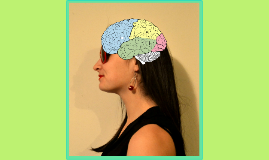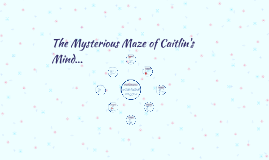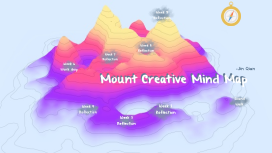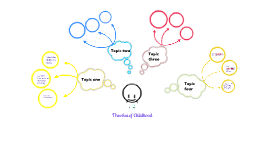Creative Mind Map
Transcript: -Jin Qian Mount Creative Mind Map Mount Creative Mind Map Sound Reflection Sound Walk pathway in the park photo of the park lake view Week 2 Reflection The Intelligence of Plants with Robin Kimmerer Wall. OnBeing Podcast with Krista Tippett. February 25 2016 https://onbeing.org/programs/robin-wall-kimmerer-the-intelligence-of-plants/ Braiding Sweetgrass written by Robin Wall Kimmerer A New Kind of Land Acknowledgement, Ange Loft, Candice Hopkins, IIana Shamoon and Lindsay Nixon in conversation https://canadianart.ca/features/a-new-kind-of-land-acknowledgement/ Reflection What touched me the most was Tanya's performance art. I was in tears while watching it. Her suits take on a warm, almost skin tone coloured, like the other projects she made, inclusive, harmless, warm, and peaceful. Interpreted pain with love, embrace wound with hug, I think this might be one of the greatest emotions in the world. For the Land Acknowledgement piece, the artists recreated the historical event through modern art perform, using symbols, patterns, body movements and acting skills which are other kinds of “languages” we use to communicate in modern world. I would rather call them translators, they decode something with languages we understand, and did a great job raising awareness of indigenous cultures. The podcast with Robin Wall Kimmerer on her non-traditional view of botanical aesthetics, as an environmental biologist, is very interesting. I was deeply touched by her beautiful metaphor, perhaps this is a culture thing. She talked about how indigenous people see everything as alive and has third person names for them. I was thinking we had something similar in Chinese culture. We use different characters to call animals, female human, male human, gods, and other lifeless objects, while they have the same pronunciation. As human beings we should maintain respect and humility to the earth, which people in the past did much better than we do now. “In the dance of the giveaway, remember that the earth is a gift we must pass on just as it came to us. When we forget, the dances we’ll need will be for mourning, for the passing of polar bears, the silence of cranes, for the death of rivers, and the memory of snow.”(Robin Wall Kimmerer, Braiding Sweetgrass) Pictures I took inspired from reading Braiding Sweetgrass photography experience reflection As the water spread over the backs of her feet, she felt the biting cold, the rough surface of the rock is rubbing against her skin. After standing for a long time, she gradually stopped feeling cold and even got a little warm。 We were amazed at how quickly the human body adapts to the nature. John Akomgrah: Art 21 - 16 minutes https://art21.org/watch/art-in-the-twenty-first-century/s10/john-akomfrah-in-london-segment/ (Links to an external site.) Week 3 Reflection Nicholas Galanin, “Shadow on the Land” https://www.pbs.org/video/nicholas-galanin-shadow-land-and-excavation-and-qblj8m/ Read: The Globalized Museum? Decanonization as Method: A Reflection in Three Acts. (originally published in Mousse Magazine #58, April–May 2017) Bonaventure Soh Bejeng Ndikung http://moussemagazine.it/the-globalized-museum-bonaventure-soh-bejeng-ndikung-documenta-14-2017/ Nicholas Galanin "Shadow on the Land" The three artists their own unique methods of delivering their art pieces/messages. Starting with Nicholas Galanin, his art installation which is a burial site in the shape of the shadow of the white colonialist, Captain James Cook, located in Sydney, Hyde Park. In my opinion, it conveys his message in a way that is more abstract, it is not presented as-is but rather it required the spectators to reflect upon him/herself. Of course, there are traces of hints of the general direction which he wanted to steer to. For example, in one of the mounds there is a board with “bush burial” which is a reference to a painting portraying “the white heroism” that is quite inaccurate in a sense lacks historical truth. In the light of showing the cruelty and the ruthlessness of the colonialists I think it is doing a wonderful job that anyone who comes from a background where their country had a history of being colonized can find their own interpretation of what the piece means. I would say his method of delivery is effective, the core message is clear and there are room for interpretations John Akomagrah For the works done by John Akomfrah, his art piece is more straight forward. they are comprised, most of the time, a series of video pieces that are stitched together and presented in a multiple screens format. There is also post-editing involved which helps to communicate with the audience, as he said he is more like a choreographer than a creator. Most of his work stems from his background as a Ghanaian immigrant. After his realization that the art, in a general sense, which most people has seen are most likely euro centric. The discomfort as he felt like he is out-of-place in the culture results in he wanted more The

















